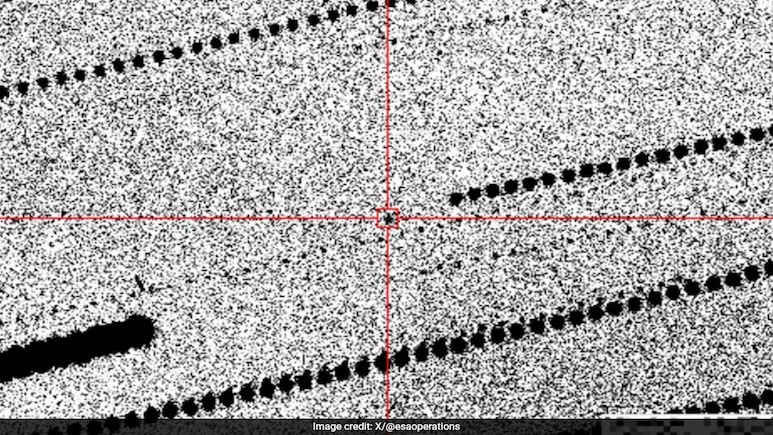
- Asteroid 2025 TF passed 428 km above Antarctica on October 1, 2025, closer than some satellites
- 2025 TF is about 1 to 3 metres wide and posed no threat to Earth during its close approach
- The Catalina Sky Survey discovered 2025 TF hours after its closest approach to Earth
An asteroid named 2025 TF recently made a remarkably close pass by Earth, stunning space enthusiasts globally. The asteroid was one of the closest non-impacting approaches ever recorded as it flew just 428 km above Antarctica on October 1, 2025. It came closer to Earth than some satellites.
2025 TF was the second closest after 2020 VT4, which passed 370 km above the Pacific Ocean in November 2020. The European Space Agency (ESA) shared details about the asteroid, stating that its altitude was similar to the orbit of the International Space Station (approx. 370-460 km).
The asteroid is roughly 1 to 3 metres across and was first spotted by the Catalina Sky Survey a few hours after it had passed Earth. Objects of this size often produce fireballs if they enter Earth's atmosphere, but 2025 TF posed no threat.
ESA and astronomers used Las Cumbres Observatory to pinpoint its orbit. According to the ESA, tracking down a metre-scale object in space is an impressive feat, especially when its location is still uncertain. The observation has helped astronomers determine the close approach distance and time given above to such high precision.
Asteroid 2025 TF is roughly 1 to 3 m across and was first spotted by the Catalina Sky Survey a few hours after it had passed Earth.
— ESA Operations (@esaoperations) October 6, 2025
Objects of this size can produce fireballs if they strike Earth's atmosphere, and small meteorites can make it to the ground. pic.twitter.com/M037c7PKZU
Asteroid 2024 YR4
Another asteroid, named 2024 YR4, has sparked attention as astronomers believe that it might hit the Moon in 2032. Instead of the usual plan to deflect the asteroid, scientists are proposing to blow it up. The asteroid 2024 YR4, which initially created a buzz over the possibility that it might be a threat to Earth, could hit the Moon after six years.
The threat from this asteroid, which is about 60 meters wide, is relatively small and won't cause Earth-shattering damage, but hitting the Moon could still have big consequences for our planet.
Experts have expected that a lunar impact would throw up tonnes of debris, threatening satellites and also the International Space Station (ISS). The impact could create a spectacular meteor shower visible from Earth, but also increase meteor risks for space assets.
Track Latest News Live on NDTV.com and get news updates from India and around the world

